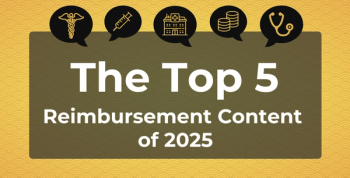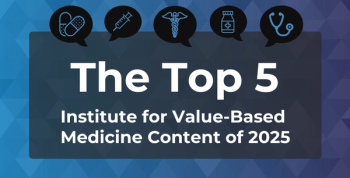
Are Value-Based Models Helping or Hindering Care Delivery for Primary Care Providers?
Value-based models continue to enter the healthcare system, affecting a variety of fields, including primary care. And while success stories have been shared by payers and CMS touts these models as a way to “save” primary care, that's not the current reality, said Theresa Hush, chief executive officer of Roji Health Intelligence, LLC, during a session on population health management at the National Association of Managed Care Physicians 2019 Fall Managed Care Forum, held October 10-11 in Las Vegas, Nevada.
Value-based models continue to enter the healthcare system, affecting a variety of fields, including primary care. And while success stories have been shared by payers and CMS touts these models as a way to “save” primary care, that's not the current reality, said Theresa Hush, chief executive officer of Roji Health Intelligence, LLC, during a session on population health management at the National Association of Managed Care Physicians 2019 Fall Managed Care Forum, held October 10-11 in Las Vegas, Nevada.
When asking the audience of primary care physicians (PCPs) if value-based care is shaping up to be organized and directed where every practice has a good option, just a few hands popped up. When Hush changed direction and asked if value-based care is shaping up to be chaotic and overwhelming, with physicians struggling to find the right fit, the majority of hands shot up.
However, changes made by CMS show urgency and intent in pushing value-based care in primary care, said Hush, who outlined a multitude of changes announced by the agency in just the last year. These changes include the
Hush singled out another change that has particular implications for primary care:
No matter what value-based models providers are participating in, whether it be the 2 under the Primary Cares Initiative or under ACOs, physicians are at risk; however, the financial implications differ based on the model, said Hush.
While Direct Contracting, ACOs, and Medicare Advantage models all leave providers responsible for their costs of care, the extent to which they are responsible may differ. For example, Direct Contracting offers partial and global capitation. Meanwhile, under Primary Care First, there are rewards and penalties for hospital utilization.
But, no matter which model physicians choose, they’ll still require the same tools, including coordination of care, communication with hospitals, and risk stratification, said Hush.
However, the increasing presence of value-based models and concurrent push toward risk for PCPs are happening alongside primary care downsizing. According to The Physician’s Foundation
At the same time,
“Their comfort with being in risk and their ability to deal with risk either by capacity of their own work or their general burnout are intertwined, and until we resolve the issues of their ability to practice in a way that is good for patients and for them, then we’re not going to make a lot of progress with good results and high risks” explained Hush, noting that primary care capacity is the number 1 thing hindering PCPs from being able to effectively take on value-based models.
Physicians are also now required to implement certain skills they haven’t yet been taught, including motivational interviewing, shared decision making, and addressing social determinants of health, as well as an understanding of the data needed to be collected and shared, said Hush.
These data required for improving risk spread across 4 categories:
- Patient data, including risk adjustment data, social determinant of health data, patient goals for highest risk, claims data, and predicted costs
- Referral data, including cost profiles, quality and outcome data, volume, and patient costs per member per month
- Cost data, including per member per month/per member per year, predicted to actual, episodic by chronic condition, and variances by patients and physicians
- Quality and outcomes data, including outcomes compared with patient foals, outcome improvement over time, and variances by patients and physicians
As a result, change is needed, she explained. And, there are several aspects of care that PCPs are overwhelmingly looking for:
- Rules for the game of risk, and a voice in choosing options
- More resources to support the risk they do
- More time with patients
- More data and information for medication decision making
- Seeing patient cost and outcomes over time
“We’ve all discussed how we need to lighten the physician load, we need to being more resources to bare, we need to figure out methods of gathering data that aren’t burdensome for physicians, and so on, but we don’t have a clear best practice for doing that,” said Hush.
Patient data gathering needs to be part of intake so the physician should know what’s going on before they have the appointment; there need to be roles for support, coordination, and communication; and there needs to be a sharing of best outcomes in teams to focus on what works, concluded Hush.
Newsletter
Stay ahead of policy, cost, and value—subscribe to AJMC for expert insights at the intersection of clinical care and health economics.








